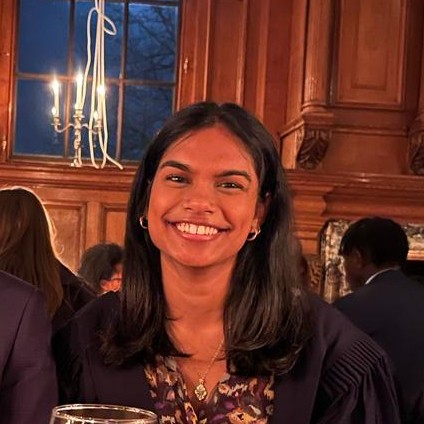|
Childhood is a period of time associated with self-development, self-discovery and the forming of one’s identity. The transition from childhood to adulthood is also seen as a loss of innocence and a gaining of maturity, independence, and agency. Yet, this is a complex process that looks different for different children across the world. For child brides, this transition out of innocence comes sooner, and they are thrown into the depths of ‘adulthood’ without being adult. Here, childhood and adulthood are messy categories that refer more to a set of social and cultural characteristics than a defined age-bracket.
During periods of conflict and crisis, young girls are often left most vulnerable to child marriage. Child marriage can be defined as a union in which one or both parties are below 18 years of age ( Source - BMJ ). Refugees often sit in transitional spaces like refugee camps which are characterised by uncertainty. As children in these spaces there is a double sense of transition. As such, marriage is largely seen as a way to provide some certainty and stability in an otherwise precarious situation. Indeed, a 2014 UNICEF report claimed that 1 in 5 registered marriages of Syrian refugees included child brides. Recently there has been a huge push to end the practice of child marriage as there is growing concern regarding its adverse effects on young women. For example, there is a heightened risk to a girl’s reproductive and sexual health, especially when cultural norms pin a girl’s value to her fertility and hence, she is married to bear children. There is also risk of physical violence to young child brides who face ‘disciplining’ from their in-laws and husbands if they do not adhere to domestic social roles. This restricts the education, employment, autonomy and mobility of child refugee brides (ISource - BMC Public Health) Self-actualisation, alongside self-development, is one of the 7 fundamental human needs and refers to intrinsic growth to achieve one’s fullest potential. Psychologist Abraham Maslow outlined a hierarchy of needs that must be met before one can become truly self-actualised. They are:
Importantly, potential is a murky term that doesn’t have a fixed meaning. It varies individual to individual. In the context of refugees, Maslow’s hierarchy is complicated as their rights are constrained. Many refugees struggle to meet their own physiological needs and live in dire situations and extreme poverty. Those who are able to meet this need, often still do not feel safe due to conflict around them or due to policing at borders and refugee camps. If the first two steps of the hierarchy are not met, this begs the question – can refugees ever truly self-actualise? For child brides who face the threat of violence and restricted freedom, the path to self-actualisation is fraught with even more complications. However, even for the most privileged in society, self-actualisation is not something that comes very easily. Very few people claim to have met their full potential, found fulfilment and peace in their lives, and met all their hopes, dreams and aspirations. Refugees are too often regarded as a collective or reduced to numbers. As individuals, they too have dreams and aspirations, though remain limited by their situation and cannot think so long-term as the rest of society is able to do. If self-actualisation is defined as an intrinsic need to make the most of potential and strive to utilise all of one’s abilities, child refugee brides, despite not meeting all Malsow’s hierarchal needs, are still on a journey to self-actualising. Mainstream narratives centre on the negative effects of child marriage and present children as powerless subjects of traditional cultural norms. However, children too have agency. Refugee children are forced to make decisions regarding their safety and security. Western scholarship frequently neglects this type of agency as it deviates from what the West and development agendas would deem the ‘rational’ choice. It is important to understand that though child marriage is laden with negative consequences, many girls choose to marry as an escape and a form of protection. Refugees are just trying to survive, and sometimes this means they have to pick a risky option to avoid a riskier one. Syrian refugees use the word Sutra (https://www.ncbi.nlm.nih.gov/pmc/articles/PMC8654413/) to refer to social protection and preservation of familial honour. This is used as justification for child marriage by young girls themselves, or their parents and community. As well as symbols of innocence, children are also symbols of the future. There is a fear surrounding children and the actualisation of the futures they stand for, and for refugee parents, this future is one that is safe and secure. Marriage is one way in which childhood futurity is negotiated for refugees, though it certainly comes with a great deal of risk. Um Ali is a refugee in Lebanon who married off her 16-year-old daughter. Her daughter had dreams to study and become an architect, but her mother feared her safety as the men around them were attacking women. Marriage was a way to shield her daughter, who she described as “innocent and very pretty”, from assault. (https://www.savethechildren.org/content/dam/usa/reports/advocacy/sowm/sowm-2014.pdf). Um Ali’s daughter was not able to fulfil her dream of becoming an architect and her self-development was accelerated as she had to forgo much of her childhood innocence to play a more adult role. Can we say that she gave up her path to self-actualisation? Self-actualisation is also associated with adulthood and is commonly believed to require a certain level of emotional and cognitive development. All children have their own unique developmental journey, and their capacity to self-actualise is limited within the context of the abilities and experiences. Childhood is a critical time for this development and though they may not self-actualise through seeking philosophical answers to questions of fulfilment like adults may, they hone their strengths, interests and unique identities. Child refugee brides develop at a different rate to other children, they face a different set of challenges and navigate a difficult every day. They are thrown into adulthood and are forced to develop emotionally, rapidly. It can be argued that their childhood development is cut short. In actual fact, they continue to develop, but their context changes. This type of self-development may not be the norm, but it is development regardless. Exploring an adult domain means their childhood aspirations and potential changes. This can be seen as a limit to self-actualisation but can also be seen as the forging of a new path instead. Self-actualisation is a journey rather than a goal, a journey made far more difficult for some than others. Young people actively transform and engage with their social reality, and this is no different for child refugees. Overall, child marriages that result in limited autonomy for child brides, curtained educational and employment opportunities, restriction on personal freedoms and mobilities, ultimately hinder self-actualisation. Yet, as Maslow argues, it is an intrinsic need to self-actualise and child refugee brides engage in a battle to achieve their potential, despite their situational context. It is a deeply individual and personal process. This may be through forming communities with other child brides or simply playing games or engaging in recreational activity as a form of escapism, which can contribute to self-growth and identity. Where efforts are being made to end the practice of child marriage, efforts should also be made to provide child refugee brides with comprehensive support systems, including mental health support, educational opportunities, legal protection, empowerment programs and access to health clinics. By helping foster an environment that prioritises child refugee well-being and growth, the battle to self-actualisation is made easier.
0 Comments
Leave a Reply. |
Author
Harini is a second year Geography student at Oxford University. She researched and wrote this article as part of the Oxford University Micro Internship programme.
|

 RSS Feed
RSS Feed

